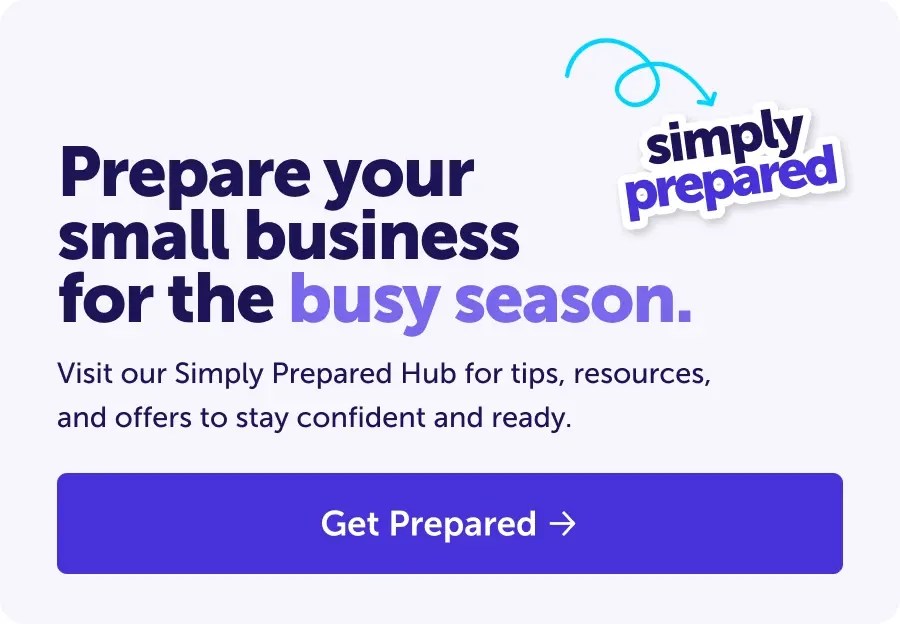Your employees are your most valuable asset. But understanding how to hire the right person and retain the strongest team members isn’t always simple. Knowing not only how to hire but also how to encourage their professional development and manage them well is what stands between an OK boss and a great one.
Gianni Spradley, founder and CEO of Fifteen East Media Group, shared with us her experience as how an employee helped her become a better boss. “I’ve had some doozies of managers, but I’ve also had some incredible ones. And truthfully, the awesome ones taught me just as much as the difficult ones — mainly how I want to lead differently.”
But if you want to continue developing your skills as a manager, here are some tips to help you recruit, hire, and retain stellar employees.


Develop Your Hiring Strategy
Whether you were the employer or the potential employee, anyone who’s been through a hiring process knows that it’s not always linear. In times of economic uncertainty, that process can get even more high-octane and competitive. So how can a business owner get a handle on recruiting? The most simple answer is to have a system in place. Here are a few details that are worth nailing down before you get started.
Understand when and why you need extra help.
One factor that should impact your hiring strategy and timing is whether or not your business has a busy season. Knowing when to expect seasonal business changes allows you to think ahead and start hiring with plenty of time to train new employees. Think of it this way — a shop owner wouldn’t want to still be in the middle of onboarding team members when Black Friday rolls around. They’d want to have all that squared away and give the new hires a chance to learn the ropes beforehand so they aren’t hitting the ground running.
Another factor to consider is skill gaps. No one knows everything. If you’ve noticed there’s demand for something that isn’t your forte, it’s a good indication your business could benefit from having another skilled professional on staff.
Develop the job description.
A thorough job description can go a long way toward improving your hiring process. A general “HELP WANTED” sign just won’t cut it — unless you want to sift through a bunch of resumes for applicants who aren’t the right fit.
When done correctly, a job description will help narrow down applications until you’re left with better-suited candidates. It should include responsibilities, time commitment, prerequisites, and other expectations you may have for the role. Exact job description requirements can vary by state, so be sure to check your local laws. If you already have a seasoned employee (or several) on staff, it might be a good idea to run the description by them as well. Their first-hand experience can help you figure out if you’ve missed anything.
Choose the right interview questions.
When it comes to finding the right match, a resume can tell you a lot. But a solid interview speaks volumes. According to Gianni, “It’s all about the energy I feel and trusting my gut — and your gut never lies. When hiring new staff for our agency, the interview process usually runs three to four rounds, which gives us the chance to really see what makes candidates light up through their responses and body language.”
Choosing the right interview questions is crucial. In addition to the important basics — such as experience and availability — don’t be afraid to try some off-the-beaten-track questions, such as:
- Explain something we probably don’t know about. Don’t be afraid of a tangent. Letting a candidate describe something they’re passionate about in great detail can help you learn more about their personality, how they share information, and whether they’ll be a good fit for your team.
- What’s your communication style? For Gianni, communication is key. “You have to know how to communicate effectively, report and follow up properly, and do the research, research, and more research — and then apply it.”
- What’s something you’ve seen or experienced lately that you loved? This could be a book, movie, album, museum — anything that moved them. This can help the candidate relax, meaning you may get better answers to your other questions.
How you want to expedite your hiring and onboarding (within reason).
Bringing a new person into the fray requires many important steps, so it’s important to save time and frustration wherever it makes sense. This could include:
- Opting for phone or video calls for your initial rounds of interviews
- Sending the paperwork the incoming hire needs to review ahead of time so it doesn’t slow down their first day
- Fast-tracking their training by having them shadow an employee
Your mileage may vary based on what type of business you run. The important thing is to look over your hiring and onboarding process, and try to identify opportunities for improved efficiency, and brainstorm reasonable solutions.
Build a Candidate Pipeline
Even if you aren’t always hiring, it’s not a bad idea to always be recruiting. Gianni says “It’s about finding budding raw talent that’s actually willing to put in the work.” Sometimes great candidates come along when you don’t have an opening. Getting their info and fostering that connection can help make actively hiring that much easier when the time comes.
One simple way to do this is to network online. LinkedIn,1 for example, is a common social media platform that can help employers build a talent network. You can reach out to professionals with compatible backgrounds and make connections that could pay off later.
You also can encourage referrals from your current employees. A referral won’t always be a guarantee, but a recommendation from an employee you trust could help you find a great candidate when you need one.
Managing Seasonal Employees
Whether your busy season is the holidays, the summer, or year-round, preparedness is always key. As mentioned above, starting the hiring process early is going to be a life-saver. As you interview candidates, make sure you’re completely transparent regarding the longevity of the role. If it’s a truly seasonal position with no chance of going permanent, the applicant should know. This will make sure both your expectations and theirs are aligned.
If you tend to bring on seasonal employees yearly, you can let them know that as well. You may find someone who’s interested in future opportunities, and it could help motivate them as they train for the role.
Focus on Retention
“Put yourself in their shoes. Think back — what did you lack during your career journey?”
Gianni Spradley, Fifteen East Media Group
Once the employee is hired and trained, the next step is encouraging them to stay onboard. Job satisfaction plays a huge role in employee retention. So what can a small business owner do to improve retention? Here are just a few ways:
- Prioritize onboarding. This is your chance to make a great first impression on a new hire. Make sure you’re getting them acclimated, giving them reasonable goals, and not overloading them with new information.
- Recognize efforts. Everyone likes to have their hard work acknowledged. Depending on your budget, you could give them a small gift card as a token of your appreciation.
- Provide growth opportunities. This could mean offering promotions, career development, or even training them in other areas of the business.
Get the Protection You Need
Hiring your first employee — or hiring additional ones — can impact your insurance needs. More employees can mean greater exposure to workplace risks. Workers’ compensation insurance can offer financial support to employees who become ill or injured on the job. Not only does this show your team that you have their back — it could also save you thousands in medical fees. Plus, most states have workers’ compensation requirements for employers, and it’s important to make sure you have the coverage you need.
That’s not the only way to protect your livelihood. You can protect your business, your clients, and your wallet with other coverages such as general liability, professional liability, business owner’s policy insurance, and more. Fortunately, Simply Business makes finding the right coverage easy for your business. Our quote comparison tool allows you to browse tailored coverage recommendations, shop quotes from trusted insurers, and select the policy you want all in one place. And it takes only a few minutes.
Get Insured in Under 10 Minutes
Get an affordable and customized policy in just minutes. So you can get back to what matters: Your business.
Get Our Guide to Finding, Onboarding, and Retaining Employees
Not sure how to recruit new talent? Want to know how to hire your first employee? Learning helpful tips on how to address an underperforming worker? You’ve come to the right place.
Finding & Keeping Good People is a business owner’s guide to hiring, interviewing, and managing employees. This free downloadable PDF compiles our best tips for employers who want to hire for the long term.
To get your free copy of the employee guide: Enter your email address in the box below, complete the CAPTCHA prompt, and click “Download.” The guide will open right in your browser. It’s as simple as that!
What’s Inside the Guide
Here’s what you can expect from the guide:
Knowing when to hire more staff. If you’re a small operation or a team of one, how do you know if additional help is needed? Is hiring a second set of hands a good use of your resources? In our guide, we explore signs that it could be time to build your team based on your workload, stress level, and business goals.
Finding and interviewing the right candidates. The guide will help you know how to recruit new employees and how to hire the right person. We offer tips for fine tuning your job description and how to plan and conduct an interview.
Onboarding and training employees. Learn how to support your employees from day one by following thorough training and onboarding procedures so they can become oriented to the role before being thrown in the deep end.
Education and development. Knowing how to hire the right employee is one thing — knowing how to keep them is another. We discuss how benefits, incentives, and additional learning opportunities can help improve retention.
Letting employees go. We’ll help you understand key signs it could be time to let someone go, implement an improvement plan, and make sure you’re prepared before parting ways.
How employees impact your business insurance. Adding to your team comes with added responsibilities. Not only do you need to protect your business against threats, you also need to make sure your employees are protected as well. The guide suggests business insurance options to help you avoid paying out of pocket for your employees’ workplace injuries and property damage.
And more! Like what you see here? You’ll find a treasure trove of additional information in our Resource Center.
Please note: This guide is for general, informational purposes only and is not intended to provide legal, financial, or other professional advice. Please obtain expert advice from employment specialists, including legal, human resource, and other professionals, who may better understand your business’s needs or circumstances.
Resources:
- https://www.linkedin.com/ ↩︎
